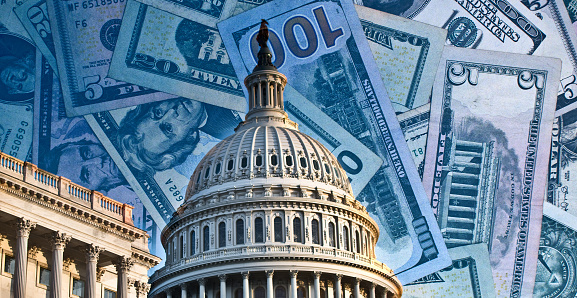What is Viral Marketing (and Does It Work in 2024)?
Viral marketing leverages the power of social sharing to spread messages quickly and widely. It capitalizes on creating content that resonates so deeply with audiences that they feel compelled to share it with their networks. The aim is to generate buzz and brand awareness through organic, word-of-mouth promotion. In 2024, viral marketing continues to evolve with trends in technology and consumer behavior. Brands are using innovative strategies to tap into viral potential, utilizing platforms like TikTok, Instagram, and YouTube, and integrating data-driven insights to craft shareable content. But does it still work? Absolutely. With the right approach and understanding of current trends, viral marketing remains a potent tool for achieving rapid visibility and engagement.

Viral marketing has become a buzzword in the realm of advertising and social media. With the ever-evolving landscape of digital marketing, understanding viral marketing's role and effectiveness is crucial for businesses looking to enhance their brand visibility. This article delves into the intricacies of viral marketing, its mechanics, and its relevance in 2024.
Understanding Viral Marketing
Viral marketing is a marketing strategy that encourages individuals to share marketing messages with others, creating a ripple effect that spreads exponentially. The essence of viral marketing lies in its ability to reach a vast audience quickly, often relying on social networks and other online platforms to facilitate the spread of information. Unlike traditional marketing, which typically involves a one-way communication channel, viral marketing emphasizes user-generated content and engagement.
The Mechanics of Viral Marketing
The mechanics of viral marketing are relatively simple yet effective. A brand creates compelling content, such as videos, memes, or articles, that resonates with its target audience. This content is designed to evoke strong emotions, whether it's humor, nostalgia, or inspiration. When users connect with this content, they are more likely to share it with their friends, family, and followers, leading to increased exposure for the brand.
The concept of “shareability” is crucial in viral marketing. Content that is easily shareable encourages users to spread the message, often leading to organic growth. Social media platforms play a pivotal role in this process, as they provide a convenient way for users to share content with their networks. The viral nature of this marketing strategy relies heavily on the willingness of users to engage with and promote the content.
The Elements of Successful Viral Campaigns
Successful viral marketing campaigns often share common elements. First, they tap into current trends or cultural moments, making them more relatable and timely. Brands that can align their messages with ongoing conversations are more likely to capture attention.
Second, effective viral campaigns leverage storytelling. A compelling narrative can resonate with audiences on a deeper level, fostering emotional connections. Brands that tell authentic and relatable stories tend to leave a lasting impression on their audience.
Another key element is the use of visually appealing content. Whether it’s an eye-catching video or an aesthetically pleasing image, high-quality visuals are more likely to grab attention and encourage sharing. In the age of short attention spans, visually striking content can make all the difference in a campaign's success.
Finally, an incentive to share can enhance the likelihood of content going viral. Whether it’s through contests, giveaways, or simply offering value, motivating users to spread the word about a brand can significantly boost visibility.
The Evolution of Viral Marketing
Viral marketing has evolved significantly over the years, adapting to changes in technology and consumer behavior. In the early days of the internet, emails were the primary vehicle for sharing content. Marketers often relied on catchy subject lines and humorous content to encourage sharing.
As social media emerged, the landscape changed dramatically. Platforms like Facebook, Twitter, and Instagram became the go-to channels for viral marketing. Brands quickly recognized the power of influencers and user-generated content. Collaborating with influencers allowed brands to reach wider audiences, leveraging the trust and credibility that influencers built with their followers.
The rise of mobile technology also influenced the way viral marketing works. With smartphones becoming ubiquitous, users can share content with just a few taps. This accessibility has further accelerated the spread of viral campaigns, making it easier than ever for brands to reach potential customers.
Does Viral Marketing Work in 2024?
As we step into 2024, the effectiveness of viral marketing remains a topic of interest. With the digital landscape continuously evolving, brands must adapt their strategies to stay relevant. While viral marketing can yield substantial results, it is not guaranteed. Several factors determine whether a campaign will go viral.
The current consumer landscape is marked by increased skepticism. Audiences are more discerning about the content they engage with, often prioritizing authenticity and transparency. Brands that fail to establish genuine connections may struggle to achieve viral success.
Additionally, the algorithms of social media platforms play a significant role in determining the visibility of content. As platforms prioritize user experience, content that resonates with users is more likely to be amplified. Brands must be mindful of these algorithms and tailor their strategies accordingly.
Despite these challenges, viral marketing can still be effective in 2024. Successful campaigns often blend creativity, relatability, and a deep understanding of the target audience. By staying attuned to trends and leveraging innovative approaches, brands can harness the power of viral marketing.
Case Studies of Successful Viral Marketing Campaigns
Examining successful viral marketing campaigns can provide valuable insights into what works. One notable example is the Ice Bucket Challenge, which aimed to raise awareness for ALS. The campaign went viral as people participated and shared videos of themselves pouring ice water over their heads. The challenge not only raised significant funds but also generated widespread awareness about ALS.
Another example is the “Damn, Daniel” meme that took social media by storm. It featured a short video of a teenager complimenting his friend’s sneakers. The simple yet relatable content resonated with audiences, leading to a surge in shares and views. Brands that capitalized on this trend saw a boost in engagement, demonstrating how timely content can lead to viral success.
These case studies highlight the importance of creativity and relatability in viral marketing. By tapping into emotions and leveraging current trends, brands can create content that resonates with their audience and encourages sharing.
Challenges of Viral Marketing
While viral marketing can offer substantial rewards, it also presents challenges. The unpredictability of viral campaigns makes it difficult to replicate success. What works for one brand may not work for another, and achieving viral status often requires a combination of timing, creativity, and luck.
Moreover, the rapid pace of social media means that trends can change quickly. A campaign that gains traction today may become outdated tomorrow. Brands must be agile and ready to adapt their strategies in response to shifting trends and audience preferences.
Another challenge is the potential for negative backlash. Viral content can be polarizing, and brands may face criticism if their campaigns are perceived as insensitive or out of touch. Navigating this landscape requires a deep understanding of the audience and cultural sensitivities.
Best Practices for Implementing Viral Marketing
To maximize the chances of success, brands should follow best practices when implementing viral marketing strategies. First, research and understand the target audience. Knowing their preferences, interests, and pain points can guide content creation and messaging.
Second, focus on creating high-quality, engaging content. Investing in professional visuals and compelling narratives can significantly enhance the shareability of the content. Brands should aim to evoke emotions that resonate with their audience.
Additionally, monitoring trends and staying relevant is crucial. Keeping an eye on social media conversations and popular culture can help brands identify opportunities for timely content. Engaging with audiences through comments and shares can also foster a sense of community and increase the likelihood of viral success.
Finally, be prepared to measure and analyze the results of viral campaigns. Understanding what worked and what didn’t can inform future strategies. Brands should track engagement metrics, shares, and overall reach to assess the effectiveness of their campaigns.
The Future of Viral Marketing
Looking ahead, the future of viral marketing is likely to be shaped by technological advancements and changing consumer behavior. As artificial intelligence and machine learning continue to evolve, brands may leverage these tools to personalize content and target specific audiences more effectively.
Moreover, the rise of new social media platforms presents opportunities for innovative viral marketing strategies. Brands that are willing to experiment with emerging platforms and formats may find unique avenues for reaching their audience.
In an era where authenticity is paramount, brands must focus on building genuine connections with their audience. Viral marketing will increasingly rely on relatability and meaningful engagement rather than sheer entertainment.
Viral marketing remains a relevant and powerful tool for brands in 2024. While it presents unique challenges, the potential rewards are significant. By understanding the mechanics of viral marketing, embracing creativity, and staying attuned to audience preferences, brands can create content that resonates and spreads. As the digital landscape continues to evolve, the ability to adapt and innovate will determine the effectiveness of viral marketing strategies for years to come.
Frequently Asked Questions about Viral Marketing
What is viral marketing, and how does it work?
Viral marketing is a strategy that encourages individuals to share a marketing message with others, creating a rapid and expansive spread of content. It works by creating engaging, relatable, and often emotionally charged content that resonates with audiences. When users connect with the content, they are likely to share it within their networks, leading to organic growth and increased brand visibility.
What makes content go viral?
Several factors contribute to making content go viral. Key elements include relatability, emotional resonance, visual appeal, and a strong narrative. Content that taps into current trends or cultural moments is also more likely to be shared. Additionally, an incentive to share, such as contests or exclusive offers, can enhance the likelihood of content going viral.
Is viral marketing only effective on social media?
While social media is a primary platform for viral marketing, it is not the only one. Email marketing, blogs, and even traditional media can facilitate the spread of viral content. However, social media's shareability and wide reach make it the most common and effective avenue for viral marketing campaigns.
Can any brand achieve viral success?
Yes, any brand can achieve viral success, but it requires creativity, an understanding of the target audience, and a bit of luck. While larger brands may have more resources to create high-quality content, smaller brands can also go viral by crafting unique and relatable messages that resonate with their audience.
How do you measure the success of a viral marketing campaign?
The success of a viral marketing campaign can be measured through various metrics, including engagement rates, shares, views, and overall reach. Analyzing these metrics helps brands understand how well their content resonated with the audience and whether it achieved its marketing goals.
What are the potential risks associated with viral marketing?
Viral marketing carries some risks, including the potential for negative backlash. Content that is perceived as insensitive or out of touch can harm a brand’s reputation. Additionally, the unpredictability of viral campaigns means that not all efforts will lead to success. Brands must be prepared to manage any fallout and adapt their strategies accordingly.
How can brands create content that is more likely to go viral?
To create viral content, brands should focus on understanding their audience's preferences and pain points. High-quality visuals, compelling narratives, and timely, relatable messages can significantly enhance shareability. Brands should also consider engaging with their audience and encouraging interaction to foster a sense of community around the content.
What role do influencers play in viral marketing?
Influencers play a significant role in viral marketing by leveraging their established trust and credibility with their followers. Collaborating with influencers allows brands to tap into their audience and amplify their message. Influencers can help create and share content that resonates, increasing the chances of it going viral.
How can a brand recover from a failed viral marketing campaign?
Recovering from a failed viral marketing campaign requires transparency and a willingness to learn from mistakes. Brands should address any backlash head-on, acknowledging their missteps and outlining steps for improvement. Engaging with the audience and demonstrating a commitment to authenticity can help rebuild trust and restore the brand’s reputation.
What trends are shaping the future of viral marketing?
The future of viral marketing is likely to be influenced by technological advancements, changing consumer behaviors, and the rise of new social media platforms. Personalization through artificial intelligence and machine learning will enable brands to target specific audiences more effectively. Authenticity will continue to be essential, as consumers increasingly seek genuine connections with brands.
Get in Touch
Website – https://www.webinfomatrix.com
Mobile - +91 9212306116
Whatsapp – https://call.whatsapp.com/voice/9rqVJyqSNMhpdFkKPZGYKj
Skype – shalabh.mishra
Telegram – shalabhmishra
Email - info@webinfomatrix.com
What's Your Reaction?





















